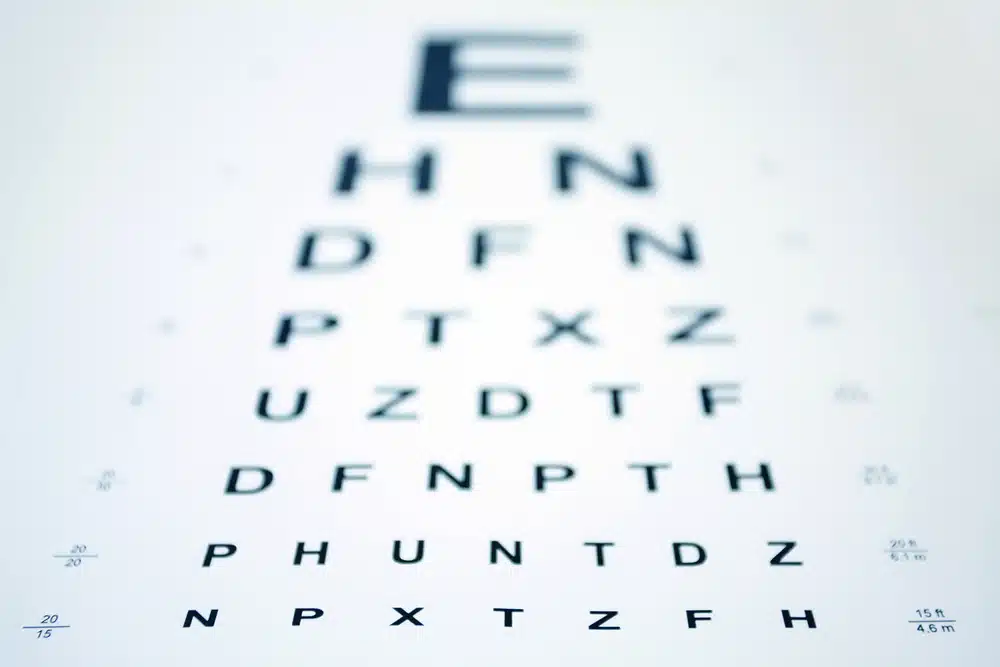During a comprehensive eye exam, there might be some assessments performed by your doctor that you may not be familiar with. Nevertheless, the experts you can count on most are the eye specialists having you read letters from the chart in front of you.
On that note, how much do you know about that eye chart? Do you ever wonder whether they are all the same or when they were invented? Here are a few important facts about eye charts to help you understand how they work and why they’re so important.
Contents
What is an Eye Chart?
An eye chart, also called a Snellen chart, was developed in 1862 by Herman Snellen. It is one of the tools used by eye doctors to assess a patient’s eyesight. The eye chart will show letters at a progressively smaller size. Based on how well you can see the different letters, your optometrist can determine whether you have certain eye conditions, such as myopia or an astigmatism. Moreover, it will enable the optometrist to provide you with a prescription that will allow you to see clearly and comfortably. Today, many optometrists will use a logMAR chart to give their patients more accurate results. A logMAR chart (Logarithm of the Minimum Angle of Resolution) is a chart that is used to measure visual acuity. Each show row will have the same number of letters and will become smaller as they go down.
How to Use an Eye Chart
An eye chart will commonly have 11 rows of capital letters. The first line will have one very large letter, and the following rows will have an increasing number of letters that are smaller in size. As part of the procedure, the specialist will ask you to stand up to 20 feet away from the chart. In addition, they will have you take off any contacts or glasses you wear.
At this point, you will cover one eye and read out the smallest line of letters you can see. This process will be repeated with the second eye.
It is possible that a phoropter, an instrument used by optometrists to test different lenses on each eye, will be used during the examination. Depending on the size of the office, you may be asked to view your chart through a mirror giving the same impression as standing 20 feet away.
Your results will depend on your age and health. For example, children that are three years old should be able to read the 20/40 line. However, adults should be able to identify the majority of letters on the 20/20 line.
Are All Eye Charts the Same?
Eye charts are not all the same, as they each serve a different purpose. Some will use pictures or patterns, while others use letters. Optometrists will have some charts to measure distance vision and others to assess near vision. Furthermore, each is designed for distinct age groups; some are intended for children and others for adults. The Snellen eye chart, however, is the most common and recognizable.
What is 20/20 Vision?
20/20 vision is described as “normal” vision at a 20-foot distance from the chart. This means that patients who have 20/20 vision are able to make out letters and objects from a distance of 20 feet just as someone who has “normal” vision would from the same distance. 20/20 is the vision efficacy required for tasks like piloting an aircraft, but better vision is possible and measurable.
Is 20/20 Vision Perfect?
It is a common misconception that 20/20 vision is “perfect.” In fact, it is only “normal.” For example, if a person has 20/15 vision, they can make out objects from 20 feet away, whereas someone with 20/20 vision would need to be 15 feet away to see clearly.
What is Poor Vision?
The standards for visual acuity vary by jurisdiction. In some places, 20/40 vision is considered the minimum to drive a car without corrective lenses. In Ontario, drivers must have visual acuity of 20/50 or better. If your visual acuity is lower you will need to visit your optometrist for corrective lenses. Patients with vision of 20/200 (one-tenth of normal vision) are considered to be legally blind.
What Eye Charts Don’t Measure
Remember, eye charts are only a rough measure of visual acuity and will only detect refractive errors. They do not measure depth perception, peripheral vision, colour perception, or the ability to perceive contrast. Someone could have 20/20 vision when staring directly ahead. However, if they have less than 20 degrees of peripheral vision, they are considered legally blind.
Furthermore, eye charts don’t measure the health of your eyes. Other tests are needed to measure your eye fluid pressure, dryness, retinal health, and the presence of diseases like glaucoma.
Though eye charts are an important component of an eye exam, additional assessments are needed to examine your overall visual and optical health. If it has been a long time since you have had your eye examined, then we’re here to help. Feel free to contact the Laurier Optical team today to schedule your next eye exam.
